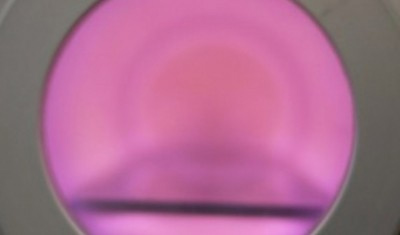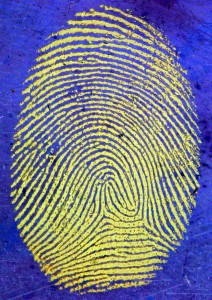
1.Glass/PDMS plasma bonding
Plasma bonding can be used in the fabrication of microfluidic chips. To permanently glue PDMS chips to the glass, the researchers used a plasma cleaner to change the surface properties of the glass and PDMS. The plasma treatment will change the surface chemistry and allow the PDMS to adhere to channels on other substrates (either PDMS or glass). If this step goes wrong, your chip will leak and will not work correctly.
2.the effect of glass and PDMS plasma sealing is as follows:
 2.1. Surface properties
2.1. Surface properties
Plasma is the device that affects the surface; all contamination seriously affects the final closure. Contrary to popular belief, for glass/PDMS plasma bonding, longer treatments do not improve the surface except in exceptional cases. For example, the presence of a fingerprint can lead to a failure of treatment on the relevant surface.
2.2. Plasma cleans indoor air pollution
The gas composition in the plasma chamber will change the chemical connection generated on the glass or PDMS surface. As a result, even in small quantities, some impurities can contaminate your surface. The most common contamination is from the vacuum pump or the oil around the compressor. Because of the oil in the plasma cleaning chamber, you may see the same plasma as before, but the chemicals will be different, and the PDMS will not bind.
2.3. One indicator of plasma success: stability and color
A good indicator of plasma quality is its color/luminosity (depending on the pressure and gas used).
2.4. Best time for plasma treatment
Timing is the key to your success and the key to your closure. Too short a plasma treatment does not functionalize the entire PDMS surface, and too long a plasma treatment can change the PDMS surface too strongly. The longer the plasma activation time is, the rougher the surface is, and the bond performance will be affected. For plasmas commonly used for soft lithography, the optimum time for the most vital bonding is usually between 20 and 60 seconds.
2.5. Time after plasma
After the plasma treatment, the surface bonds began to recombine, and after a few minutes, the surface became insufficient to activate the glass to bind to the plasma. It would help if you did the bonding immediately after the treatment, do not let your samples into the plasma chamber after the exhaust, and quickly put them together.
3. How to improve the sealing effect of PDMS with glass plasma?
3.1. Baking can improve the bonding quality between glass and PDMS plasma
A heating device is recommended to make the chemical bonding easier after the PDMS touches the glass or PDMS. Time, temperature, and device can vary between the laboratory and the user. Bake at 80-90 °C for 15-30 minutes, usually long enough to form a good bond.
3.2. Choose a gas
The surface state depends on the gas used. In most cases, indoor air plasma works well. Some researchers prefer to use pure O2 to control the atmosphere completely, but this requires more equipment and process rigor.
3.3. Effect of dust on glass-PDMS plasma seal
The presence of dust on the surface will prevent the glass from bonding to the PDMS plasma, and the size will depend on the rigidity of the PDMS. There are other ways to remove dust that require a clean, dry air jet for the first clean. You can use 3M clear tape to remove particles from the surface or soak the chip in isopropyl alcohol more efficiently. Sound waves are used to separate all unwanted particles from the surface and inside the hole of the PDMS.
To clean the glass, in turn, use acetone, isopropanol, water and dry it.
4. Glass and PDMS plasma encapsulation: some common misconceptions
4.1. You need to press hard on the PDMS chip to calibrate the glass PDMS plasma bonding
Intense pressure on the PDMS to facilitate bonding is easier to correct for poor plasma handling. But it doesn’t work, and your actual risk is irreversibly damaging and changing your runner. Remember, the bonding must be quick and easy. If the contact between the two parts is not good, it may be because of dust. To correct the bonding, the only thing to do is heat the device and press the chip gently again.
4.2. We can move the PDMS chip a second time after the first touch
If you put the chip in the wrong place the first time, or if the plasma seal doesn’t work everywhere, it’s no use trying to reposition the chip the second time. The best thing to do is throw the chip away or do another plasma seal, but that doesn’t necessarily work, and it certainly can’t be replicated.
5.Bonding of glass to PDMS plasma: How to check the quality of plasma treatment during calibration?
First test: angular contact measurement
The plasma treatment changed the surface properties, i. e. the hydrophobicity of the glass and PDMS. The excellent treatment makes the surface hydrophilic. The first test involves placing a drop of water (about 20 ΜL) on each surface and measuring its angular contact with the surface. A contact angle of less than 20 ° usually results in bond strength of more than 2.5 bar.
Second test: diffusion of the Paste Front
When you glue a chip, the parts at the contacts are dimmed so that you can track the contacts. After the plasma treatment, the PDMS is gently placed on the glass or another piece of PDMS, and the contact front should proceed quickly and easily.
Test three: no leakage under high pressure
The third test injects a liquid into your device and then tests its performance under high pressure. You can use a simple syringe, push it with your finger, and it will be enough to have a few bars.





